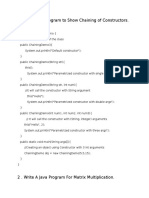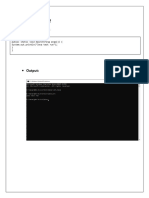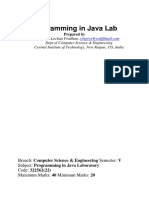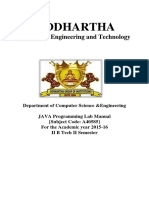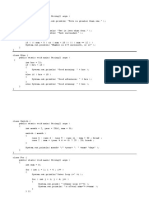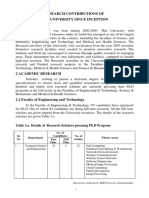0% found this document useful (0 votes)
13 views21 pagesJAVA Day2
The document contains multiple Java programming tasks, including creating a calculator applet, a matrix class, an Indian flag applet, a student class with custom exceptions, an even/odd checker GUI, and a package for shapes with area calculations. It also includes an applet for drawing shapes and a banking system with savings and current accounts. Each task is accompanied by example code demonstrating the required functionality.
Uploaded by
linoantony07Copyright
© © All Rights Reserved
We take content rights seriously. If you suspect this is your content, claim it here.
Available Formats
Download as PDF, TXT or read online on Scribd
0% found this document useful (0 votes)
13 views21 pagesJAVA Day2
The document contains multiple Java programming tasks, including creating a calculator applet, a matrix class, an Indian flag applet, a student class with custom exceptions, an even/odd checker GUI, and a package for shapes with area calculations. It also includes an applet for drawing shapes and a banking system with savings and current accounts. Each task is accompanied by example code demonstrating the required functionality.
Uploaded by
linoantony07Copyright
© © All Rights Reserved
We take content rights seriously. If you suspect this is your content, claim it here.
Available Formats
Download as PDF, TXT or read online on Scribd
/ 21





